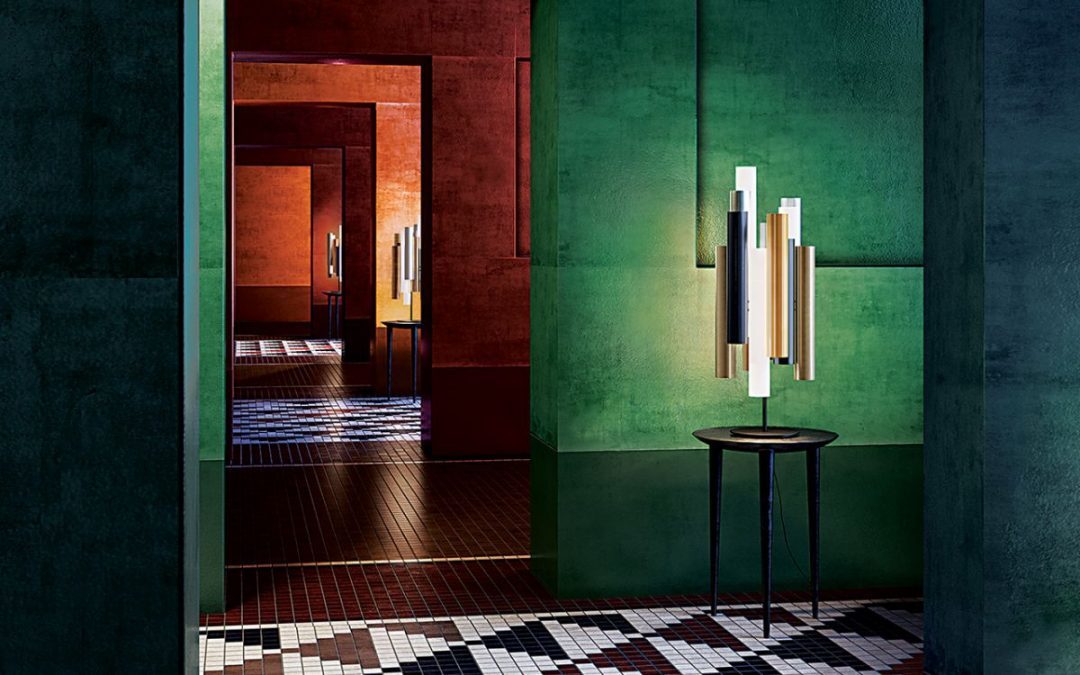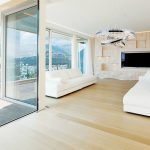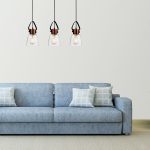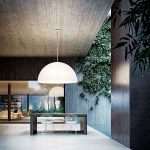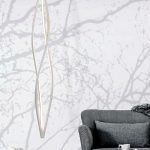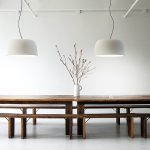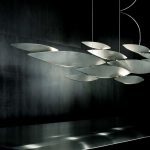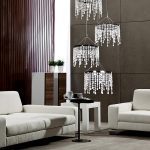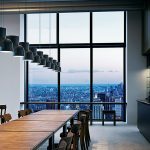We are now six months into 2018 and within the world of contemporary interior design and decoration, there’s an escalating appreciation of the value of lighting, i.e. which luminaires to select and how best to plan their usage. And further, how to evaluate the ongoing significant technological benefits of these new light sources, the best of which reflect the creativity of industrial designers and architects internationally.
Cover: Casarredo
So was lighting previously at the bottom of the new build or revamp spec list? Likely it was just a decade or so ago. What characterises lighting design in 2018? Is there a showcasing of distinct new trends?
- Flos – available from Il Lusso
- Flos – available from Il Lusso
Jabulile Khumalo of importers Radiant Lighting outlines a few: ‘Brass fixtures, plus matt black and polished chrome are definitely at the forefront, as are geometrically shaped circular and hexagonal pendants. These can create a decorative focal point as can oversized blown glass examples, while pendants still provide functional lighting for kitchen islands. Cluster chandeliers and metal caged and mesh fixtures can further introduce texture within a contemporary interior, especially if clean lines and uncomplicated fabrics are part of the décor.’
- Radiant Lighting
Contemporary interior design directions remain in a state of continual development on a global scale, and such is the case with lighting design as an integral element. This is largely due to ongoing R&D in the sector and resultant trends that are driven by the introduction of new materials and fresh forms; in a nutshell, luminaire design fuelled by advancing technological innovation.
So, if the urban-industrial décor trend is infiltrating the lighting industry, is the art deco style of lighting still as relevant as it was in 2017?
Tracey-Lee Gradidge of importer / retailer Casarredo: ‘The buzz word on this lighting trend is ‘upgraded industrial’. But I feel that the modernism of urban industrial style and the sleek elegance of art deco are still very relevant for 2018 trends in South Africa and across the globe.’
- Radiant Lighting
‘The urban-industrial décor signature has indeed taken the lighting industry by storm. The distressed paint look and feel is coupled to light fittings that look like they are made from various salvaged material – such as bottles, concrete and metal mesh – which become the base for fittings,’ says Jabulile Khumalo.
‘Both styles are relevant and both are here to remain for a while,’ says Kelly Klopper of importers Eurolux / Euronouveau. ‘We are, however, seeing a blend of the two styles while noting spaces that are taking on a distinct industrial art deco feel. Industrial fixtures have been softened slightly and given a more refined feel, while art deco designs are slightly edgier than they were in previous years. The two styles blend very effectively together so one needn’t worry about which direction to lean towards.’
- Euro Nouveau
- Eurolux
In lighting terms, the historic discovery of the mid-’80s was the introduction of the low voltage halogen globe, still used extensively over three decades later for ceiling, wall and task lighting. The ‘pure light’ advantage of LV halogen was obvious. The light was whiter, the lamps were small and neat and used less energy, and would last up to two years in a stable electrical supply environment.
- YaYaHo by Ingo Maurer. ©Ingo Maurer GmbH, Munich
One of the most famous low-voltage halogen lighting systems was the YaYaHo, first introduced in Europe in 1984 by Munich-based designer Ingo Maurer. The fixture heads were fully adjustable and could be positioned anywhere along the parallel set of horizontally mounted cables. Aesthetically, such low-voltage lighting systems might seem out of date today, but the complexity of installing such a system and the coordination of components has a number of affinities with today’s LED (light emitting diode) lighting when it comes to source, power, circuitry and dimming.
Indeed, rising costs have created evermore need for renewable energy, a major global eco issue; happily LED light sources are increasingly key in conserving electrical power.
- ELDC
It was shortly after the turn of the millennium when the LED began to be appreciated for use in interior architecture and design. Available in both warm and cool emissions, it provides a whiter light source than LV halogen and uses less energy. It also has a considerably extended longevity, is more eco-friendly (containing no mercury) and is available in a variety of sizes and combos from miniscule to grand.
- Lumiart
Kelly Klopper adds: ‘LEDs in SA are following the global trend. An increasing number of households are prioritising sustainability and we’re seeing more people investing in energy-saving LED globes as opposed to conventional LV halogen. They suit the minimalist look that continues to hold its ground in 2018, so lighting with simplified silhouettes and clean lines is still on trend.’
Eli Kalmi of importers K_Light says: ‘Combining LED with traditional crystal chandeliers is an emerging trend and something of a challenge this year, but it’s typical of classic designs now being changed to adapt to LED technology.’
- K_Light
Whether it be: chandeliers, pendants, wall brackets, sconces, downlights, strategically located uplights, concealed strip lighting, floor lamps, table lamps or flood and spotlights there is an LED option and each has its proven place. Exchanging halogen for LED – often in exactly the same fixture – can save up to 60 percent in electrical power costs. So for the design fraternity it offers creativity, efficiency, durability, low energy and low maintenance; major factors across the board.
- Euro Nouveau
This is not just an after-dark scenario. During daylight hours accent lighting is a great ambiance builder and in both residential and corporate interiors well sited galleries set tones, create warmth, accentuate textures and illuminate focal points. Lighting energises any living space or work area to complement the decorative elements created by architects and interior designers.
For the full article see Habitat #266 July / August 2018
Newsletter Sign Up

